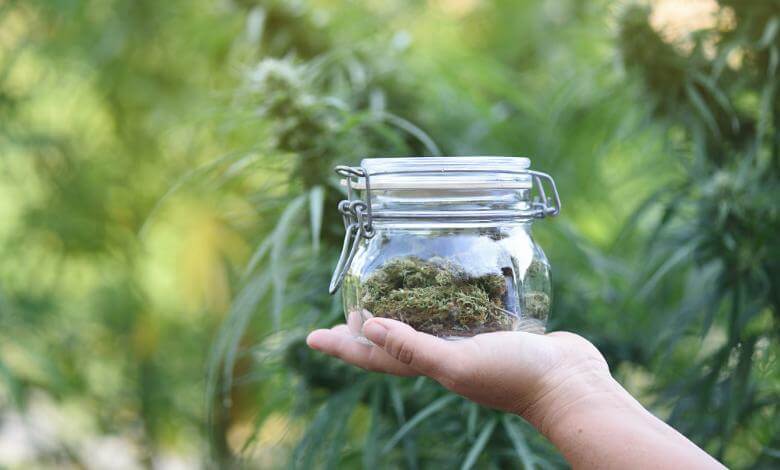THCA is not a very new cannabinoid but it’s popularity has grown tremendously in recent times, which may bring up the question of what is a high THCA percentage looks like. Like every other cannabinoid, THCA can vary greatly in a cannabis strain. You first need to know what it means to have a high percentage of this cannabinoid to decide on the strain you want to select.
Here, we reflect on the cannabinoid, the different ways you can consume it, and how much of it can be suitable for you.
We will explain the different stages of percentages and what they mean. As a result of this blog, you will be able to make an informed decision about what is a good percentage for you.
If you want to purchase THCA items, you can check our CannaAid website for more details on our products.
Table of Contents:
- Key Takeaways
- What is THCA?
- How Strong is THCA?
- Cannabis Label Anatomy
- Understanding the Potency Analysis
- Converting THC to THCA
- How to Decarboxylate THCA
- Percentage of THCA and THC
- What is a Good THCA Percentage?
- What is a High THCA Percentage for Flower?
- What is a High Percentage for THCA Gummies?
- What is a High Percentage for THCA Diamonds?
- Does a Higher THCA Make a Difference?
- Calculating The THCA Percentage
- What Is Considered High THC?
- More THC = Higher Potency?
- Where to Buy THCA Online
- Final Thoughts
- Frequently Asked Questions
- Does THCA Make You High?
- What’s The Current THCA’s Legal Status?
- Does THCA Show Up On a Drug Tests?
Key Takeaways
- THCA is a cannabinoid that is non-psychoactive and can be found in plants that, with aging, slowly convert it to THC
- The percentage of THCA in a cannabis strain is a crucial factor to keep in mind when you select a product, as it can affect the strain’s potential
- People usually prefer a high percentage for a good experience, so you need to be mindful of how much you consume. Moderation is key. If you are new to the hemp community, you can start with a small dose and increase your consumption gradually until you find the dose that suits you the most.
-
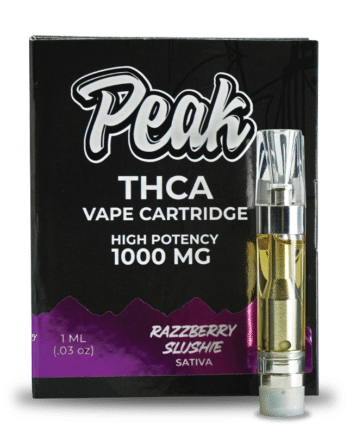 THCA Vape Cartridge$19.99
THCA Vape Cartridge$19.99 -
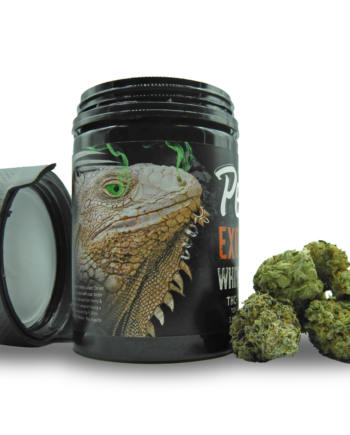 Peak Exotic THCA Flower$49.99
Peak Exotic THCA Flower$49.99 -
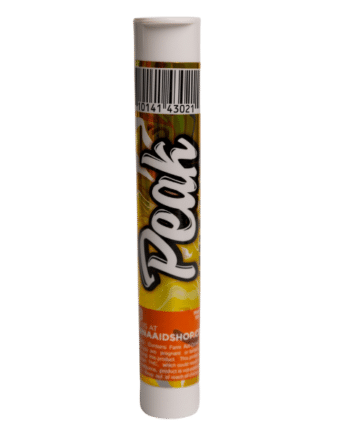 Peak High Potency THCA Prerolls$12.99
Peak High Potency THCA Prerolls$12.99 -
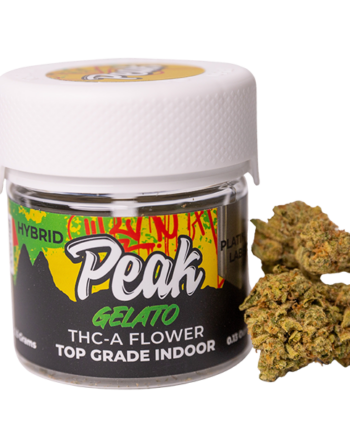 Peak Platinum THCA Flower 3.5g$60.00
Peak Platinum THCA Flower 3.5g$60.00 -
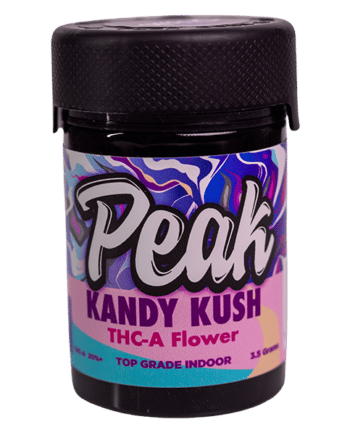 Peak High Potency THCA Flower$49.99
Peak High Potency THCA Flower$49.99 -
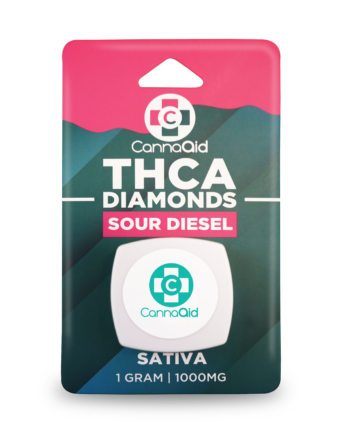 THCA Diamonds$39.99
THCA Diamonds$39.99
What is THCA?
Cannabinoids present in cannabis plants include tetrahydrocannabinolic acid (THCA). This one, in particular, is the precursor of THC. The inactive form is the same as the active form. Cannabidiol is a non-psychoactive compound.
Young cannabis plants are abundant in THCA, and they slowly convert this to THC as they age. This process is called decarboxylation. If you have ever taken a good look at a cannabis plant, you must have noticed the shiny trichomes, which most people confuse with THC. However, trichomes comprise THCA, which is later converted to THC.
There is a significant difference between the cannabinoids and the THCa vs. THC percentage. In addition to CBD, THCA and THCV also differ greatly. All these cannabinoids are usually non-psychoactive; THCV and CBD are independent substances. Meanwhile, the inactive form of THC is THCA, and the former is the primary psychoactive compound in the plant.
The primary difference between THCA and Delta 9 is the carboxyl group’s presence in the former’s molecule. This means that THCA is non-psychoactive until it is burned or exposed to heat, which then converts it to THC. However, Delta 9 is the most popular form of THC, and it is also psychoactive.
Related Article: What is THCA?
How Strong is THCA?
Untouched THCA, in its original form, is non-psychoactive. However, the moment it begins to burn or is exposed to heat, it begins to form into THC. Hence, the different percentages of THCA will determine how strong it is.
Cannabis Label Anatomy
Reading and interpreting the product labels on THCA products is an important skill you need to learn. This skill is not just limited to THCA but can be useful to read other cannabis products, too.
According to the 2018 Farm Bill, products containing up to 0.3% Delta 9 THC are legal across the country. The bill also states that all cannabis items should have product labels that customers can read for more information. This includes a description of the product, its potency, quantity, dosage, storage information, warnings, and expiration date.
Keep these in mind when checking for details about the product and also the percentages of THCA:
- The name of the product should include the species of cannabis, for example, hybrid, sativa, or indica, and their strain.
- The label should also mention what is inside the packaging, whether it is an edible extract, tincture, or bud.
- The label should also mention the weight of the product inside the packaging
- The product label is required to have the dosage mentioned clearly and the amount equivalent to the exact dose. It should also mention the percentage of THCA.
-
 THCA Vape Cartridge$19.99
THCA Vape Cartridge$19.99 -
 Peak Exotic THCA Flower$49.99
Peak Exotic THCA Flower$49.99 -
 Peak High Potency THCA Prerolls$12.99
Peak High Potency THCA Prerolls$12.99 -
 Peak Platinum THCA Flower 3.5g$60.00
Peak Platinum THCA Flower 3.5g$60.00 -
 Peak High Potency THCA Flower$49.99
Peak High Potency THCA Flower$49.99 -
 THCA Diamonds$39.99
THCA Diamonds$39.99
Understanding the Potency Analysis
If you consume cannabis, you should also focus on analyzing the potency of the product. But what does that mean?
This lists the percentage of every cannabinoid that is present in a cannabis product. Of them, the percentage of CBD or THCA, is the most important.
The percentage of THCA will determine your marijuana experience. Also, the percentage can vary for different products. It could be more for buds and less for tinctures on average.
Other than the percentage of THC, you must also watch out for the other cannabinoids’ percentage, such as that of CBD, THC, THCV, etc.
It is already known that THCA converts to THC when heated. It has now become a regular practice among the companies that sell hemp products to mention all these details, especially the percentage of hemp in all products, especially THCA and THC.
This is because THCA converts to THC. So, a label may say that the hemp product contains THCA of 20% and THC of 0.9%. This means the product has a THC of 20%.
A high thca percentage is subjective, as it depends on your desired dosage. However, if you are new to the hemp community, then you can look for a low rate or low dosage and then increase it gradually based on how comfortable you feel.
Converting THC to THCA
Before you begin calculating the percentage of THCA, you need to understand the exact difference between THC and THCA. Even though they have similarities because the former is a part of the latter, they are still separate cannabinoids.
Cannabis plants produce multiple compounds, including THCA and a very small THC amount. Young plants have a high THCA percentage. THC is created when the THCA converts into THC as the plant ages. This is a lengthy process.
THCA is inactive, and on burning or exposing it to heat, it becomes THC. This transition occurs because of the decarboxylation process. When the young plants begin aging and forming THC, this process is known as the natural decarboxylation process. However, by vaping, dabbing, or smoking THCA, it begins to convert to THC; this process is called decarboxylation. By itself, THCA is pretty unstable and agreeable while converting to THC.
The main difference between the two cannabinoids is their molecular structure. THC binds readily with the endocannabinoid receptors in the body because its molecules easily fit with the CB1 and two receptors. On the other hand, THCA molecules cannot fit with the receptors due to their shape. Hence, consuming THCA and THC will give you separate experiences. THCA is also similar to CBD in a way, as they both are non-psychoactive, whereas THC is psychoactive.
How to Decarboxylate THCA
To decarboxylate THCA, you do not need any specialized equipment. Since it is already an unstable cannabinoid, little intervention is needed, and it can quickly transform into THC. And if you have been consuming products such as flowers, you could be decarbing THCA without even knowing that you are. So, what exactly is the conversion process for THC from THCA? First, you can just leave the cannabis outside at room temperature, and the decarboxylation process will begin by itself. Exposing cannabis to sunlight will also increase the decarboxylation process. The decarbing process can also occur as you cook the products due to the presence of THCA in them. However, the different decarboxylation methods are also what determine the THCA percentages.
-
 THCA Vape Cartridge$19.99
THCA Vape Cartridge$19.99 -
 Peak Exotic THCA Flower$49.99
Peak Exotic THCA Flower$49.99 -
 Peak High Potency THCA Prerolls$12.99
Peak High Potency THCA Prerolls$12.99 -
 Peak Platinum THCA Flower 3.5g$60.00
Peak Platinum THCA Flower 3.5g$60.00 -
 Peak High Potency THCA Flower$49.99
Peak High Potency THCA Flower$49.99 -
 THCA Diamonds$39.99
THCA Diamonds$39.99
Percentage of THCA and THC
Now that we have covered what THCA is, its usage methods, and its relation to THC, let us move on to the percentage aspect. A high THCA percentage may be unclear to you.
Cannabis strains usually have 15% THCA or more, and this is considered a high content of the cannabinoid before the decarboxylation comes into place. This is known as high THC strains.
When you read the product label on the packaging, you will notice the THC and THCA percentages. The latter denotes the potential content of THC in the cannabis strain. However, the actual amount of THC you will get from the product may vary and will depend on the type of the product and your consumption method, such as eating edibles, smoking cannabis buds, or using oils or tinctures.
If you are still wondering what a high THCA percentage is and how you can determine it, then you also need to know that you get the THC from consumption and not the percentage of dry THC. Usually, this percentage of the product is lower. As THCA became popular only very recently in the cannabis industry, there are a few products in the market that are THCA versions of the other popular hemp products, such as cannabis buds, flowers, etc. Raw cannabis, too, is a popular THCA item. These products have varying levels of THCA in them.
Cannabis seeds, too, are labeled as being dominant in THCA. The percentage of the same can be in the 15–20% range if you want a high THCA percentage. On another note, people have different ways to metabolize THCA. For some who like high THCA percentages, 20% is correct, while others may require lesser amounts.
What is a Good THCA Percentage?
The THCA percentages, whether high or low, are very subjective. Some may find 15% high, while others will be more comfortable. They could also prefer lower percentages. This subjective nature depends on various factors, such as the experience you want as a user, your tolerance level to hemp products, and whether you are a beginner or have been a part of the hemp community for a while, among other factors. The percentages also depend on the strains of each product, the types of products you are using, and your consumption methods.
If you are new to the hemp community, then products that are labeled as high-grade or robust could cause some confusion for you. However, these terms do not tell the potency of the products.
What is a High THCA Percentage for Flower?
This, too, is a very subjective question. It may differ from what you consider a high THCA percentage from what others do. They could have another percentage that they think is very high for them.
However, if you are buying THCA flower, then a high percentage is usually considered to be in the 25–30% range as the flower has higher concentrations of the cannabinoid than other products. Another thing to note is to be mindful of your THCA consumption for the best experience.
If you are a new hemp user, we suggest you begin with a lower dosage of THCA and then gradually build up your tolerance for the cannabinoid. You will soon understand what percentage is high for you and what works best for you to give you the best consumption experience. The high percentage factor also depends on other factors, like how you plan to consume the product. Suppose you want to dab it, smoke it, or vaporize it. Hence, we suggest you try different products and consumption methods to find your perfect combination. This will help you determine the percentage that is most effective.
What is a High Percentage for THCA Gummies?
One of the most popular edible THCA options is gummies, as they are a convenient consumption method. You just need to pop a gummy, and you are good to go. A preferred percentage of THCA in gummies is in the 10 to 15% range, giving the consumer optimal balance to have a good consumption experience. Gummies are great for those who have yet to establish their ideal dosage. You can begin by taking one gummy and then gradually increase your THCA intake with more gummies. However, it is recommended that you keep decent breaks between the consumption of each gummy for the best consumption experience. Most people also prefer THCA gummies to other forms of consumption, such as THCA Disposable Vape Pen or smoking. They also come in different flavors.
What is a High Percentage for THCA Diamonds?
It is believed that diamonds contain the highest amount of this cannabinoid. The crystals come from raw cannabis and are then isolated to extract their maximum potency. A high percentage of the diamonds is usually considered to be in the 85–99% range, as it has an incredible cannabinoid concentration, making the THCA Diamonds perfect for those who want the highest percentage of the cannabinoid during their consumption.
Consuming THCA at this level is usually suitable for those who are already a part of the hemp community and know what their ideal dosage is. However, if you are someone who is yet to understand your dosage preference or someone who is new to the hemp community, you could start with lower-percentage products such as gummies, other edibles, or even flowers.
Does a Higher THCA Make a Difference?
It is not always better to opt for a higher percentage when it comes to THCA. Some people enjoy the high percentage as it makes their consumption experience better.
However, if you are someone who is new to consuming hemp, then you should start small. Opt for a lower dosage of THCA for the best consumption experience. Your dosage can be gradually increased as you become accustomed to the products. Finding your ideal dosage is necessary to have the best consumption experience. Also, different types of cannabis have different THCA levels. So, you can also try exploring different THCA options to help you find your perfect dose.
Calculating The THCA Percentage
It is also important to know how to compute the THCA percentages. If you go to a store and pick up a THCA item that does not indicate its percentage or a friend gifts you a product that does not mention the percentage, how do you go about knowing it and figuring out your dosage? In such instances, you should ask the staff present at the dispensary to assist you. They may not know the percentage exactly, but they can give you a ballpark measure based on the strain of cannabis used in the product.
You can also have a cannabinoid analysis done on the product, but that may be an unnecessary added expense, which you can skip. Research the strain instead and take a look at it.
The percentage of cannabinoids can be calculated in several ways. Potential Total THC is one of the formulas used: 0.877 x (%THCA) + (%THC)
The correct percentage of the cannabinoid depends on your personal preference. Also, cannabis buds usually have 0% THC, but when they are burned or exposed to heat, the THCA in them begins to convert into THC, and you may get 15% or more from them. With concentrates, distillates, and tinctures, the THCA is usually activated during manufacturing. In such instances, the percentage of the cannabinoid will not change.
What Is Considered High THC?
To some people in the hemp community, 15% or more of THCA is considered high. Others consider this to be a lower percentage of their consumption.
This means the THC percentages are a personal preference. Its highs and lows are subjective as per individual needs and experiences. The percentages also differ from product to product and in different strains as well.
For people who are trying hemp products for the first time or are just very new to the hemp community, it is recommended that they start with a lower dose and then increase it with time. You can start with gummies or other edibles, so you can pop one, wait for a bit, and see if you want to consume another one. You need to try different product strains with different percentages and doses to find out what suits you best.
Also, items that have high grades or strong labels on them can be confusing. These terms do not always mean the cannabis product’s potency is what it says it is. Hence, you need to work on doing your own THCA research.
More THC = Higher Potency?
A higher THC percentage does not mean it has a higher potency, as this is a subjective experience. What may be a potent experience for a newcomer may not be for someone who has been a part of the hemp community for a while. Your method of consumption and tolerance levels, among other factors, play a key role in your overall hemp consumption experience. You will notice this if you consume marijuana for an extended period of time.
Also, seasoned cannabis users may already have saturated cannabinoid receptors. If you are a newcomer to the marijuana world, you may have a more potent consumption experience with the most basic form of hemp.
Also, other than the THC content in a product, the CBD content is equally important. CBD and terpenes, together, enhance the THC experience.
Where to Buy THCA Online
You can purchase THCA online from reputed sources like CannaAid. Providing all types of hemp-based products at the lowest rates in the market is what we specialize in. You can check our site to see our THCA and other hemp products portfolio. Whatever you’re looking for, we’ve got it. You can purchase gummy vapes in different flavors as well as flowers, buds, tinctures, diamonds, and crystals, among other items and strains as well. According to the Farm Bill, which passed in 2018, Delta 9 with up to 0.3% THC is legal nationwide.
Fortunately, THCA also falls under this category. While this is a federally legal substance, every state has its own rules. Hence, when you purchase from us online, we will be able to deliver it to you quickly. However, if you have further questions regarding its consumption, then we suggest you check with your local authorities. Also, another reason why it is better to shop online for your hemp products is because websites like ours have all the products available for you to choose from, unlike your nearby hemp store, which may have a limited variety.
-
 THCA Vape Cartridge$19.99
THCA Vape Cartridge$19.99 -
 Peak Exotic THCA Flower$49.99
Peak Exotic THCA Flower$49.99 -
 Peak High Potency THCA Prerolls$12.99
Peak High Potency THCA Prerolls$12.99 -
 Peak Platinum THCA Flower 3.5g$60.00
Peak Platinum THCA Flower 3.5g$60.00 -
 Peak High Potency THCA Flower$49.99
Peak High Potency THCA Flower$49.99 -
 THCA Diamonds$39.99
THCA Diamonds$39.99
Final Thoughts
Anything over 25% THCA is likely to be highly potent upon being exposed to heat or being burned. Therefore, a low dose should be started gradually and increased over time. A high or low percentage, despite what is mentioned on the THCA product, is subjective based on personal experiences with the same. And factors such as consumption methods, cannabis strains, and tolerance levels also affect the same. We suggest you buy THCA from reputed sources such as CannaAid, where you will get it at the best rates in the market and also excellent-quality products. While consuming hemp products, you should not compromise on quality. Hence, shopping from CannaAid will enable you to have the best quality in the market.
Frequently Asked Questions
Does THCA Make You High?
No, THCA is a non-psychoactive cannabinoid. It is an inactive form of THC, a precursor to it. Consuming it as raw cannabis will be like eating anything else. To activate the THCA to convert to THC, you need to expose it to heat or burn it. Hence, smoking, vaping, or dabbing are essential for the same. The decarboxylation process for the cannabinoid to turn into THC requires it to be burned. For the best consumption experience, we suggest you try different products, strains, and consumption methods to see what works best for you.
Related Article: Does THCa Get You High?
What’s The Current THCA’s Legal Status?
Delta-9, up to 0.3% THC, is legal federally in the United States. The US government passed the Farm Bill in 2018, which resulted in this. However, the bill allows every state to make its own rules regarding hemp-based products. Hence, there could be a bit of confusion about the legality of hemp products in different states. Most states have already adopted their own hemp laws, allowing the sale, purchase, distribution, and consumption of hemp products. THCA falls under the category of up to 0.9% delta-9 THC. Hence, it becomes federally legal as well. So, all the rules of the Farm Bill apply to THCA, too, even though it is a separate cannabinoid from Delta-9 THC.
Related Article: Is THCA Legal?
Does THCA Show Up On a Drug Tests?
Yes, even though THCA is considered federally legal across the country, if you have a drug test coming up, we recommend you avoid any hemp-related products until you are done with the tests. The drug test will only show that a cannabinoid is present but will not tell which cannabinoid exactly. The drug tests are not yet advanced, not to mention the difference between legal cannabinoids and illegal ones. The drug test does not follow a THC or THCA percentage chart. Hence, it is best to avoid hemp products until after your drug test is over.
Related Article: Does THCA Show Up on a Drug Test?

